A stunning landscape of rolling hills filled with the mysterious mist, a multi-layered green cover of the bamboo plants, a multi-coloured carpet of the wild flowers and a land of the narrow rivers with crystal clear water crisscrossing each other in the middle, the peaceful and enchanting Dzukou Valley is a visual treat to the wandering souls, perhaps the most graceful 2-days trek in North East India.
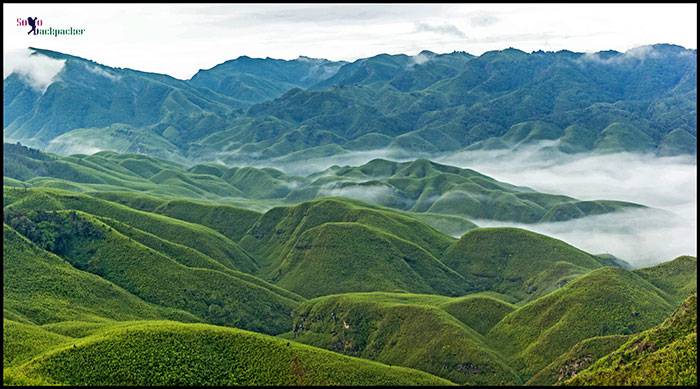
Surrounded by the mighty Japfu hill range and hidden by impenetrable forests of the wild Naga land, the trek offers a thrilling adventure– walking in the dense forests, traversing the raging rivers, meandering through the thick bamboo vegetation and living in an isolation away from the maddening crowd of a hectic urban life. Then comes the monsoon season in the month of July, when the wild flowers bloom in the valley. The hidden secret of North East India turned into a picture perfect paradise after the blooming of Dzuoku Lily and that’s why it is also perceived as the “Valley of Flowers of the North-East”.
Contents
- Arrival in Kohima
- Permit Requirements for Dzukou Valley
- Trekking to the Dzukou Valley
- Trekking to the lower part of Dzukou Valley
- Return from Dzukou Valley
- How to reach Dzukou Valley?
- Entry Fee for Dzukou Valley
- Accommodation in Dzukou Valley
- Is it possible to go Solo in Dzukou Valley?
- Mobile Connectivity in Dzukou Valley
Arrival in Kohima
I was desperate to explore the little paradise of North East India right from the beginning of my arrival in Guwahati, and finally decided to trek alone in the month of September. I departed from Guwahati by an overnight train to Dimapur and without any significant event reached there in the early morning.
The onward journey from Dimapur to Kohima by a shared car was an unforgettable experience. The road condition to Kohima is terribly bad, and there was only slush and mud due to the excessive rain. After 3 hours of a bumpy ride in a Maruti 800, I reached Kohima, a beautiful hill city with a ridiculously low volume of road traffic and peaceful environment. Later I realised that the low volume of traffic was because of the Sunday, the weekly holiday of the most people in Nagaland. A majority of Naga people follows Christianity, and they don’t work on the Sunday and go to the church three times in a day. Most of the shops remain shut, shared passenger vehicles don’t ply on the roads and the life comes to a standstill every Sunday.
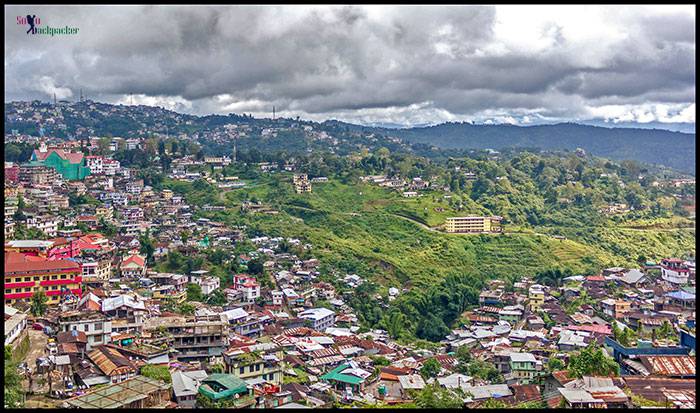
Permit Requirements for Dzukou Valley
While there is no separate permit requirement to enter into the Dzukou Valley, an Inner Line Permit is required by all Indians except the residents of Nagaland to visit the state of Nagaland beyond Dimapur.
I was already having an Inner Line Permit issued in Guwahati, but in case, you reach there without a permit, you can get it from the DC office in Dimapur.
Trekking to the Dzukou Valley
I arranged a hired vehicle somehow to drop me to Zakhama village, near the starting point of the trekking trail. I could have trekked via Vishwema Village, and it was actually a lot easier, but a hired vehicle to Vishwema village could have cost me much more. I decided to move on Dzukou Valley Trek via the Zakhama route to save a few hundred bucks.
I moved on a newly constructed unpaved road going upwards on the hill and kept asking for the precise direction from the people working in their fields. After crossing a minor river, I reached on the correct trail to the valley. During the rainy season, the river crossing could be a risky situation. Some signboards are placed at frequent intervals, but gradually they disappeared on the trail in the dense concentration of shrubs.
After a while, the vegetation grew so thick that I could not judge the trail under my feet. Imagine a situation, where you trek through the dense vegetation notorious for the poisonous snakes and you even don’t able to see the ground. I did encounter a snake, luckily on a visible trail and slightly away. Alone in a deep forest, I kept moving on the trail. Sometimes, the forest appeared so thick that it conveyed the feeling of a strange darkness in the surrounding.
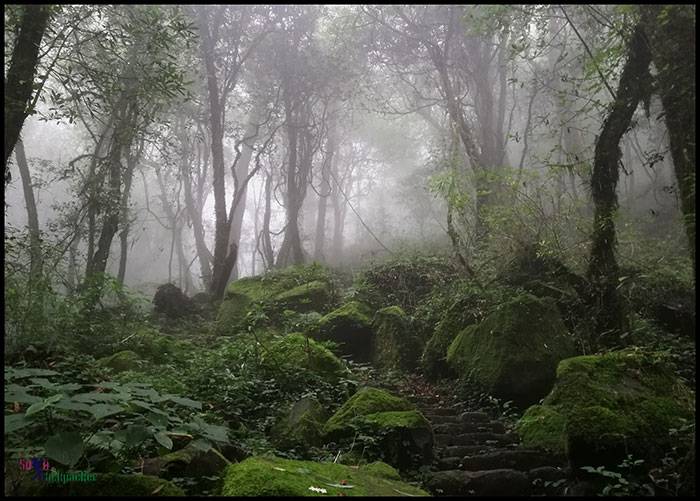
Slowly, the unpaved trail was replaced by stone boulders covered by the slippery green algae. During the dry season, the path is good to traverse with a trekking stick, but during the rain, it would be very slippery and one has to trek with extreme caution. A pair of good trekking shoes is compulsory on this trail. I met few local old women, rapidly descending on the trail through the forest without any trekking shoes, but they were the natives.
On many other trekking trails, we trek over the soil, so falling on the trail doesn’t cause any severe problem. But there on the trek to Dzukou Valley, most of the trail consists of rocks. A slight moment of carelessness can cause you to fall on the stones while breaking your feet, back, waist or something else. Therefore, it is not a pleasant experience to fall over the stones at all. A sturdy trekking shoe and a trekking stick are highly recommended on this trail.
Also Read: Trekking To Kheerganga in Himachal Pradesh- A Himalayan Heaven Of The Restless Souls
The deep forest of Dzukou Valley Trek posses many other challenges for a trekker. The other one is passing over the numerous water rivulets. When the river is dry, it is possible to navigate them without any hassle, but during the rain when they are supplied with high speed water running down from the top, it is extremely hazardous to pass over them. Few unfortunate trekkers have been swept away already in these rivulets. Due to the deposit of algae and moss, the boulders near the rivulets become very slippery. It required a lot of attention to trade them without getting hurt.
I continued moving cautiously through the lush forest for approximately 3 hours without the visible trace of a single soul. Sometimes, the enveloping clouds, impenetrable forest and profound darkness of the trail sacred me so much that kept wondering that why I was doing that. Why was I not going back? The trail is so scary in the deep forest for solo trekking. There was a potential threat of the rain due to the dense clouds over the forest. There was no proper place to find a shelter except under the trees. But luckily I had a rain jacket and a rain pant to adequately protect me from the rain.
After walking farther on the continuous trail, I fortunately found a big tin shed where four young boys were cooking something. They informed that there was around 25-30 visitors in the valley already, so there was no worry for decent shelter or proper food. That valuable news was a significant relief for me. I kept moving with renewed energy to reach at the guest house as soon as possible. Two more hours of walking and met two other boys descending through the forest. They informed that I was very closed to the valley, hardly 30 minutes of more climb was left.
I walked continuously for 15 more minutes. The sun rays were able to filter the canopy of the trees and suddenly the impenetrable darkness of the surrounding vanished with the glowing light. I looked beyond the forest and thought that I was about to reach on the top. The top edge of the pristine forest was a desired end of all suffering on that day. But, the ordeal wasn’t going over so soon.
I kept moving through the turns and twists of the forests for 30 more minutes before reaching the top edge of that deep forest. From the edge of the forest, I could see a magnificent widespread charm of Mother Nature spread in every direction in front of me. I imagined them as a green carpet of wild grasses from the distance, but a closer look revealed that they were the bamboo bushes adequately covering the entire stretch of the lovely valley. In some parts, the bushes were high enough to hide a young man, but the trekking trail is so well marked that there is hardly any chance to get lost there.
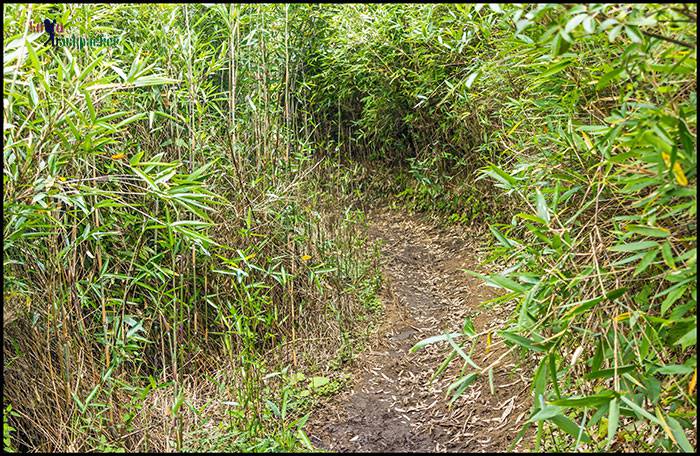
The trekking trail from the leading edge of the pristine forest of the guest house is almost flat through the bamboo bushes. As far as my eyes could see, the breathtaking views of the valley were a memorable experience. Slightly away from the marked trail, in one part of the valley, sun rays were falling gently on a limited portion after penetrating through the enveloping clouds creating a golden hue over the lush vegetation. What a view it was! It was hard to believe a landscape could be so magical. All the pain of a treacherous trek vanished instantly after seeing that breathtaking vista of nature.
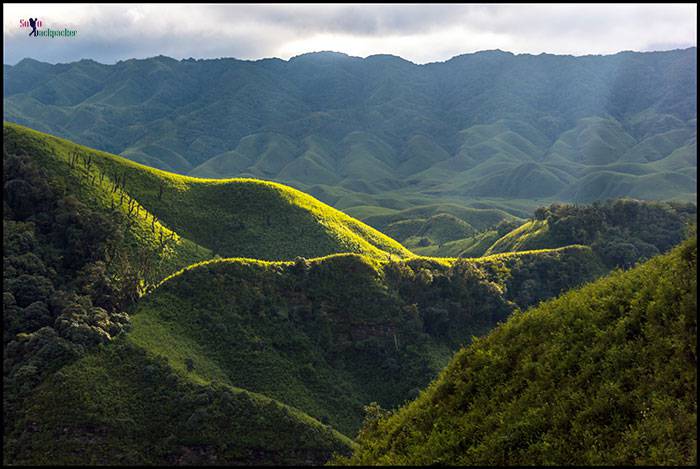
After waking for a few more minutes, I reached at the guest house, already buzzing with many young boys and girls. It was the late evening by the time I reached at that place, so there was nothing to do on that day except making few new friends and chit chatting with them.
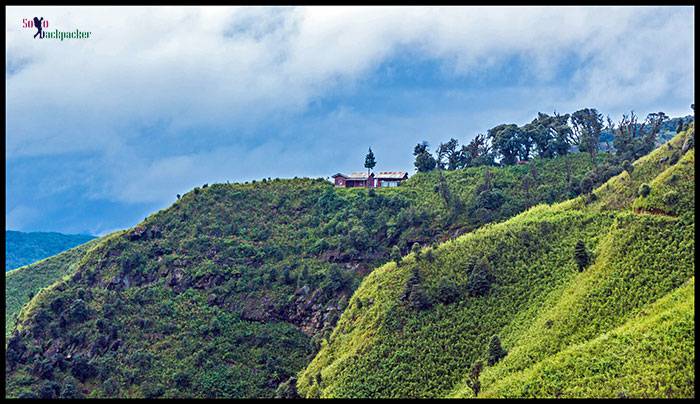
Trekking to the lower part of Dzukou Valley
Next day, I moved ahead to explore the lower parts of the Dzukou Valley. From the guest house, a narrow path leads to the lower part of the lush valley. On the way, there is one small helipad. The helipad serves as a vantage point to click some beautiful photographs of the valley. During the rainy season, when Dzukou Lily blooms on the larger scale, the panoramic view of the valley looks beyond imagination.
I reached into the lower parts, that is covered by the wild flowers instead of the bamboo shrubs. I clicked some more pictures and walked all around the lower parts of the valley through the multi-coloured carpet of the beautiful flowers while crossing the narrow rivers filled with crystal clear water. In the month of September, the season of full bloomed Dzukou Lily had been over until then, but at few places small groups of other wild flowers were present, however.
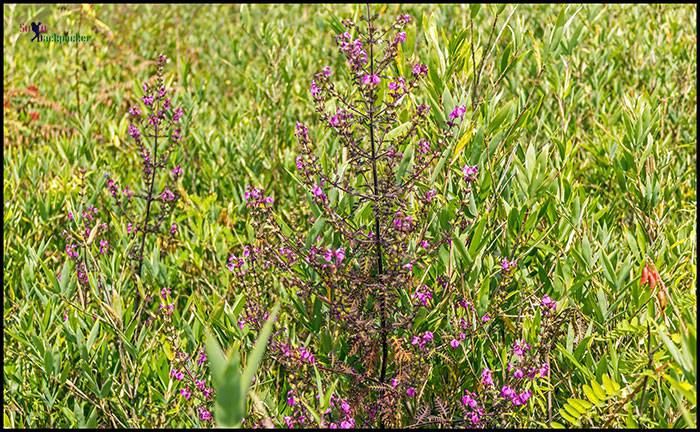
Earlier there used to be a wooden bridge on the narrow river flowing in through the valley. But, it was not there during my trip. The bridge was swept away, probably by floods. Water level in the river was low, so it was reasonably possible to cross the stream without the bridge. A Cross was visible on a distant hill, so I intended to reach there. But just below the grassy hill, the river stream was very deep and it was impossible to cross without getting wet. I promptly returned from that specific point.
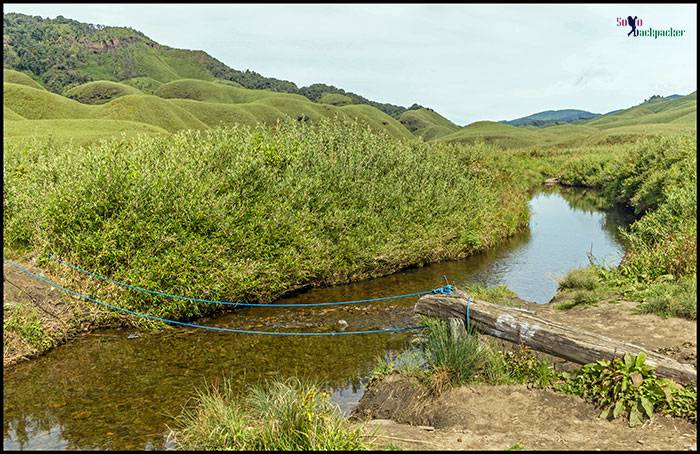
The lower part of the Dzukou valley contains a vast open ground for the camping. There is no fear of wild animals, so this part is ideally suitable for the night camping. If you carry your own tents, you can easily pitch there in the middle of that isolated paradise.
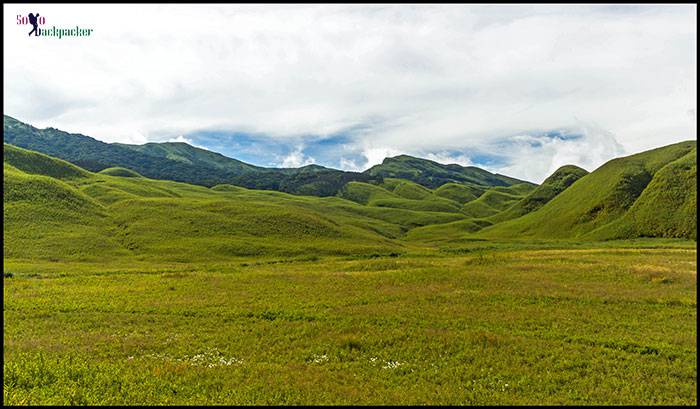
Return from Dzukou Valley
After devoting few hours in the valley, I returned to the guest house. All the fanfare at the guesthouse was already over by then. No one was there except the two caretakers. I also decided to return from the Dzukou valley, this time via Vishwema village route.
After walking for about 20-25 minutes on the same path as on the previous day, I comfortably reached at a tri-junction of three marked paths and found a signboard mentioning the Alternate Trek Route. The marked trail diverting to the left from that point is the one that goes towards Zakhama village, that I already trekked on the previous day. The trail towards the right from that point is the trail to Vishwema village, so I moved on to that path.
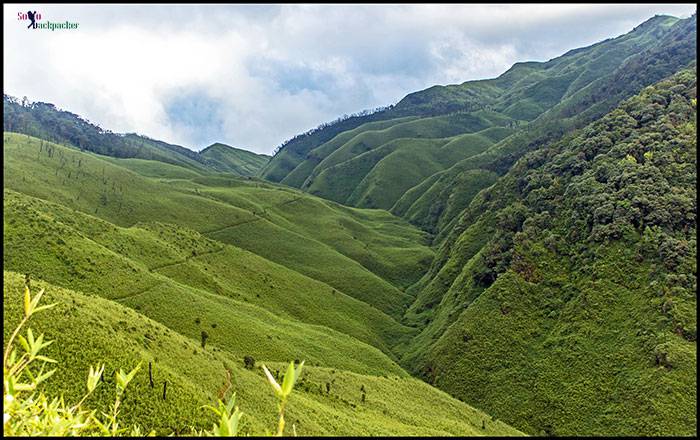
The trail is almost flat for two hours and completely covered with bamboo shrubs. At some points, the bamboo plants are so high and so dense that it is very easy to get lost. But, the trail is perfectly marked, and it is impossible to steer away from the correct path. At the faraway corner of the valley, breathtaking views await at every turn and twist of the trekking trail.
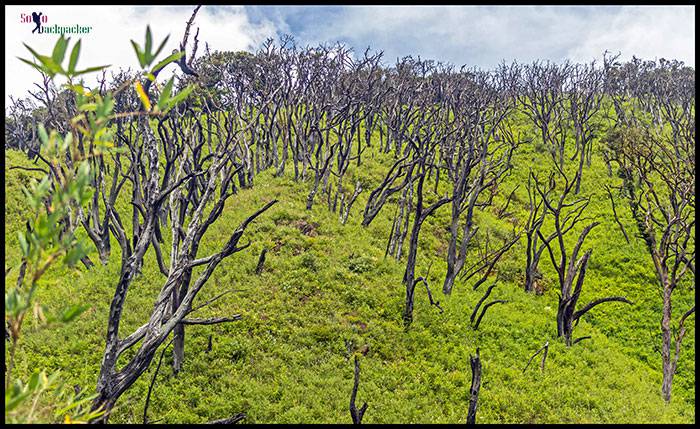
Next two hours was a pleasant walk on a flat terrain and at the end of the valley, I found a rugged trail going downwards into the deep forest. The next one hour walk was through that forest was moreover a tough ordeal, where I had to move carefully without falling down on the stones. Due to the recent rains, the path was very treacherous. I kept moving with utmost care until I reached to the lower end of the forest.
Another Trekking Experience: Trekking to Kedarnath Temple in Uttarakhand
The Dzukou Vally Trek was actually over by that time. Vishwema village was, however 8 kms away. There was no chance of getting a vehicle, so I walked on the unpaved road. The road was covered by long trees and full of water and slush. The view was so monotonous, there was no fun in the walking. Luckily, after 5 kms of walking, I found a pick van that was going towards Vishwema village. The local driver was kind enough to drop me at Vishwema village, from where I got a shared cab to Kohima.
How to reach Dzukou Valley?
The mesmerising Dzukou Valley is located at an altitude of approx 2438 meters near the border of Nagaland and Manipur in the North East India. It is merely 20-22 kms away from Kohima, the capital city of Nagaland. It is possible to trek in the valley from both the states, Nagaland as well as Manipur. The picturesque valley is best approached from Nagaland side, from the city of Kohima.
To reach Kohima from anywhere in India, one has to reach Dimapur first. Dimapur is considered as a key gateway to Nagaland. It is a major railhead and also served by an airport with two daily flights to Kolkata. Kohima is 75 kms away from Dimapur. The road condition from Dimapur to Kohima is significantly worse, and one has to be ready for one of the most bumpiest rides in his lifetime.
A shared sumo or car takes about 3 hours to cover the 70 km distance between Dimapur and Kohima. The shared vehicle may ask up to 400 Rupees per person, but bargaining is possible.
There are two proper ways to go to Dzukou Valley. The first preferred route starts from Zakhama village and the second from Vishwema village. A third route is also developed from Mao in Manipur, but I have very little information about this route.
Dzukou Valley From Zakhama Village:Zakhama is 16 kms away from Kohima. A shared jeep/sumo typically charges 50 rupees for half an hour journey from Kohima to Zakhama. The trail to Dzukou Valley is slightly ahead of Zakhama Village on the main road. Let the driver know in advance that you are trekking to Dzukou Valley, so that he can drop at the proper place.
If a shared vehicle is unavailable from Kohima, for example on Sunday, then it is possible to arrange a hired one by paying 450-500 Rupees. A signboard is installed there to indicate the path leading to Dzukou Valley. From the signboard, you have to trek through the deep forest for 5-hours and after that walk for 30-40 minutes in the valley to reach at the guest house, where you can stay in the night.
The trail from the Zakhama Village to the Dzukou valley is extremely steep, and the forest is significantly deeper. In the monsoon, it can be extremely challenging, very treacherous, and you have to cross fiercely flowing water streams. Most trekkers traditionally prefer this route for the return journey from Dzukou Valley.
Dzukou Valley From Vishwema Village:The another trail to Dzukou Valley starts from Vishwema village, approx 6 kms further on the main road from Zakhama village. A shared vehicle cost from Kohima to Vishwema village is 60 Rupees. Hired vehicle may charge up to 700 Rupees. A signboard is installed there to indicate the path leading to Dzukou Valley. From Vishwema Village, you have to walk for approx 8 kms on an unpaved road before the actual trekking trail starts through the forest.
This distance can be covered by a hired vehicle also, that may charge up to 800 rupees. The entire 8 kms stretch appears monotonous in landscape, so there is no fun walking on that road for 8 kms. After 8 kms, you have to trek for one hour on an extremely steep trail through the deep forest. After reaching to the edge of the valley, it is a pleasant 2 hour walk on a nearly flat path though the bamboo shrubs to arrive at the guest house. This trail is preferred by most of the trekkers for the onward journey to Dzukou Valley.
A Glimpse of Roopkund Trek in Uttarakhand: Trekking From Wan Village to Bedini Bugyal
While returning from the valley, the last shared sumo from Zakhama or Vishwema is available up to 0400-0430 PM. Plan accordingly. To be on the safe side, try to reach by 0300 PM.
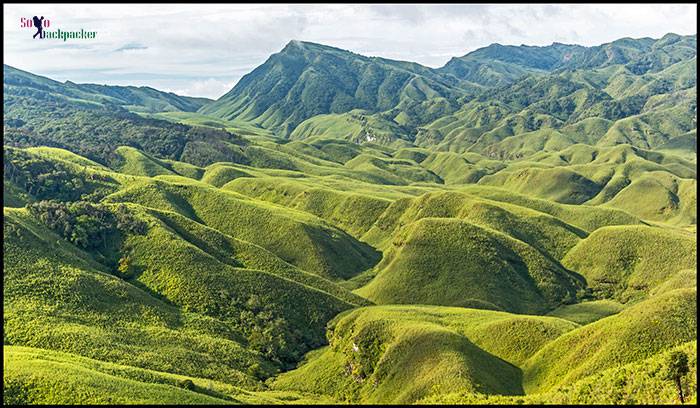
Entry Fee for Dzukou Valley
The entry fee for Dzukou Valley is 50 rupees, but there is no ticket counter to levy the entry fee. The caretaker at the guest house charges this fee with other charges related to the food and the accommodation.
Accommodation in Dzukou Valley
During the tourist season, guest house facility is available in the valley for the night stay. Stay in the private rooms cost approx Rs 150. Two big halls are also there, that can be used as dormitories. A single hall can accommodate approx 50-60 people, but you have to sleep on the floor. Sleeping bags, mattresses, blankets, pillows are all available on the rent.
If you do not get any accommodation from the caretaker, then there are 2-3 rock shelters (like a cave) on the riverbank down in the valley from the guest house. But, it requires a lot of courage to stay in the open area in the middle of nowhere, and advisable only if you are in a group.
There are adequate arrangements in the valley for the night stay, but if you wish, you can carry your own tents also.
Is it possible to go Solo in Dzukou Valley?
Yes, it is absolutely safe to trek alone in Dzukou Valley, but the conditions apply. As far as possible, do not trek Solo from Zakhama Route. The forest is really dense, and sometimes the trail is also confusing. If you have to do it, then take a local guide or try from Vishwema route. The best time to trek solo is during the Dzukou Valley Festival in the month of October, when there is a lot of possibilities to find someone on the trail.
Better to avoid trekking in the valley with the children under 10 years of age. If you have to go anyway, always go with a local guide who can help on the trails, especially if the weather gets worse suddenly in the dense forest.
Mobile Connectivity in Dzukou Valley
I checked on Airtel, Vodafone and Reliance Jio Networks and there was no coverage at all. At few places on the trail, you may get the mobile signals, but they are very weak. Since, it’s a short duration trek, you can go to Dzukou Valley without losing contact with your family for a longer duration.
How Many Days Are Required for Dzukou Valley trek?
The trek can be easily completed in two days from Kohima, however one added day in the valley is advisable. Some people also complete it only in a single day starting early in the morning from Kohima and returning by evening.
Most Important Tip
This is North-Eastern part of India, so keep in mind that it can rain anytime. When it rains, it rains heavily.
The Dzukou Valley Trek is in fact a short expedition for 2-3 days only, but still there is plenty of adventure in this trek. After reaching the ultimate destination, the breathtaking views of Dzukou Valley are unmatched and unparalleled. It is also possible to add a few more days in the trip itinerary to properly cover the nearby Jafpu peak. Carefully add some village tours to the picturesque villages around Kohima, and you can undoubtedly enjoy a memorable trip in the mysterious land of the Nagas.


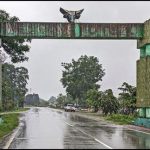
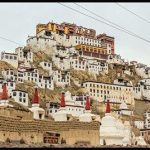
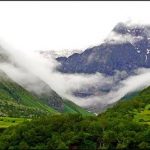

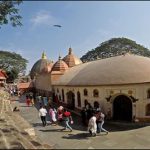
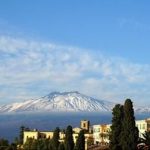
Thanks for the detailed itinerary, really brave of you to do the trip solo.
Thank you. 🙂
Very Good information & nice write up
Thank You Sir.